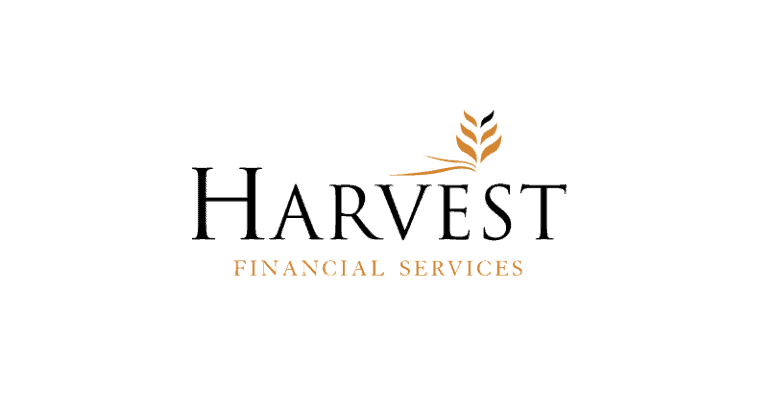Are you thinking about contributing to a pension through your business but don’t know where or how to get started?
There are different pension structures for Sole Traders and Limited Companies and contributing to a pension can be a tax-efficient way of taking money out of your company and saving for your future.
 We recently hosted two pension support webinars with Andy Dixon and Emer Kirk from leading pensions and investment firm Harvest Financial Services, ‘Harvest’. They shared their expert knowledge of pension support and administration for Sole Traders and Limited Companies.
We recently hosted two pension support webinars with Andy Dixon and Emer Kirk from leading pensions and investment firm Harvest Financial Services, ‘Harvest’. They shared their expert knowledge of pension support and administration for Sole Traders and Limited Companies.
Harvest provide individual and corporate clients with bespoke advice relating to retirement planning, financial planning and investment advisory services.
In this blog, we’re sharing the fundamental aspects of pension planning and the key considerations for business owners:
- Retirement planning for company owners
- Company owners’ options
- Retirement planning and risk
- Corporate to personal wealth
- Self-administered pensions

Retirement planning for company owners
Harvest explain that it’s important to have a robust financial structure to your retirement plan and that’s what the team at Harvest focus on primarily for their clients. They’ll help you understand the technicalities of how and when you can access your retirement benefits and the implications associated with the different options that are available to you.
We all have plans and ideas for how we would like to spend our retirement years and it’s about ensuring we have the financial security in place to support us in achieving these goals.
Why use a pension plan?
A pension plan is a great way to optimise your future income. No income tax/USC/PRSI or BIK is payable on employer pension contributions, meaning 100% of the contribution makes it into ‘the pot’. Additionally, companies can claim Corporation Tax Relief on employer pension contributions and individuals can claim Personal Tax Relief on personal contributions.
There are numerous other tax benefits to investing within a pension plan structure. You will be entitled to exemptions from Capital Gains Tax and also eligible to receive a tax-free lump sum upon retirement. The team at Harvest can advise you based upon your personal circumstances.
Business owners’ options
Sole Trader
A Sole Trader may opt for either a personal pension or a PRSA (Personal Retirement Savings Account). If there is an intention to change into a Limited Company in the future, Harvest suggests it may be beneficial to opt for a PRSA.
It’s also worth considering that a personal pension cannot usually be accessed until age 60, whereas you may be able to access the benefits held within a PRSA from age 50.
Limited Company
The directors of a Limited Company may opt for either a PRSA or an occupational pension (check out our What Does a Company Director Do? post as well).
In most cases an occupational pension will be the preferred option as it offers a more flexible structure, allowing greater contributions to be made. Note that contributions into a PRSA cannot exceed a maximum of €115k/annum and are further restricted based on the contributor’s age.

Retirement planning and risk
Investment risk
Some degree of investment risk is inevitable and it’s important that a balance is struck that you as an individual are comfortable with. The team at Harvest can offer examples and explain the specific risks associated with your investment choices.
Longevity risk
We’re living longer and longer lives these days and are often able to enjoy an extended retirement of 20 to 30 years or more. Making sure your pension plan will continue to provide for you into old age is something that needs to be at the heart of all successful retirement plans.
Sequencing risk
This relates back to investment risk. A sequencing risk may arise if investment returns are lower than expected during the first few years of retirement. This, along with the withdrawing of funds from the pension pot during those same years can have a damaging impact upon the overall health of the pension fund. One way of mitigating this risk is to factor in a cash ‘buffer’ that is available for use during the early post-retirement years.
Inflation risk
Inflation can reduce the purchasing power of funds into the future, especially when combined with a low-interest rate. This is particularly evident in today’s economy. This means that having large sums of cash in the bank can have a detrimental impact on your overall wealth over the medium to long term.
Corporate to Personal Wealth
When it comes to extracting the benefits from your pension fund, it’s important to do this in the most tax-efficient way possible. Harvest explains how Entrepreneur’s Relief, Retirement Relief and the pension scheme can be used to extract funds in a tax-effective way upon retirement.
Entrepreneurs Relief
This allows for up to €1,000,000 to be withdrawn over a lifetime at only a 10% tax rate.
Retirement Relief
A tax-free withdrawal is permitted of up to €750,000 (€1,500,000 for a couple). This can be taken from age 55. A third-party buyer must be in place or the company must be in a position to ‘buy back the shares.
Pension Scheme
You can withdraw a lump sum of €200,000 tax-free and a further €300,000 taxed at 20%. This is usually permitted from age 60, although it could be facilitated from age 50 in certain circumstances. Importantly, the funds held within the scheme are protected from creditors should the company face insolvency in the future.
Nearing retirement and no pension plan in place?
If you’ve consistently re-invested profits back into your business over the years rather than place them in a separate pension plan, you can pay a single premium to represent ‘service to date’ when you’re nearing retirement. This is a single contribution made by the company on your behalf, which is also eligible for Corporation Tax Relief.
Self-Administered Vs Insured Pensions
Insured Pension
Your contributions will be automatically invested into an agreed portfolio by a pension provider such as Aviva. A contract is taken out with an insurance company and regular premiums are paid.
Self-Administered Pension
Contributions will be made into an allocated bank account, at which point further action will then need to be taken in order to place these funds into selected investments. If this action is not taken then the funds would just remain as cash within the bank.
This option provides more flexibility to fund your pension when your business is profitable. However, it is not suitable for everyone but with the right advice, it can work very effectively.
It’s good to note that both options protect the invested funds from creditors, should your company run into insolvency issues.

Fund accumulation
A target fund of at least €150,000 would enable the successful implementation of a self-administered pension scheme. Larger funds allow a greater variety of investments which helps spread and therefore reduce the overall risk associated with the portfolio as a whole.
If you’re worried it might take you too long to accumulate €150,000, remember that you can amalgamate any existing pension funds you may have in order to help raise the capital.
Retirement planning considerations
With a self-administered pension plan, there needs to be significant pre-retirement planning, particularly in relation to the investment of cash which needs to be managed on an ongoing basis. This will ensure that large sums of money don’t simply accumulate in the pension scheme bank account and remain uninvested. Pre-retirement, the primary focus of investments will be towards capital growth.
Liquidity and asset allocation
At the point of retirement, a cash lump sum can be taken if desired. It’s important that this is planned in advance to ensure that enough liquidity exists within the pension fund to cater for it.
Once retirement has been reached and you are no longer working, your pension portfolio should primarily comprise of cash-generating assets, as you will now be drawing income from your fund.
Investment options
Self-administered pension investments can include corporate and government bonds, deposits, private equity, international funds, personalised equity portfolios and direct property. Each of these investment areas offers varying degrees of risk and reward.
Harvest suggests that direct property investments are often popular amongst their clients for a variety of reasons. For instance, rental income generated from properties that are owned by an investment fund is not subject to Income Tax and no Capital Gains Tax is due upon the subsequent sale of a property.
Key takeaway?
Planning for retirement is a necessary part of life for all of us in order to ensure both our families and ourselves are provided for in the years after we finish working. It’s important to understand the different options that are available to us and the pros and cons relating to each of them. Having a trusted financial advisor helps us to navigate this process with confidence and ensures that we’re on the right path.
Want to get in touch?
If you need pension advice and support, you can contact Harvest Financial Services here: https://www.harvestfinancial.ie/
You can also talk to your accountant first and they can guide you on what you should do next.
Want to watch the webinar? Get instant access to the recording.
Larissa is a Fellow Chartered Accountant (FCA) and is the CEO of Accountant Online, which specialises in company formation, company secretarial, annual accounting services, bookkeeping, tax, and payroll services for micro and small companies in Ireland and the UK.

